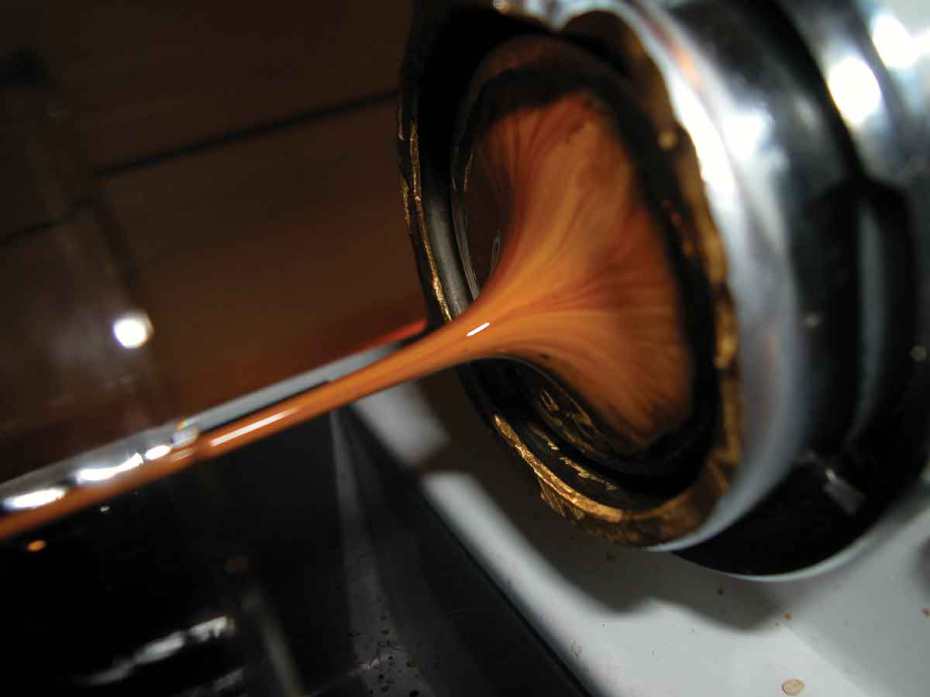In my office at home, one end of the room is devoted to computers, electronics, and my assorted projects. The other is the home of the holy grail of caffeine: my espresso bar. That’s where I measure, grind, and tamp my way to produce some beautiful espresso. I’ve been tuning and tweaking my setup for the last six months or so, and there’s no end in sight. My most recent modification involved some power tools and my portafilter.
The portafilter is the chrome-plated coffee filter holder that most people only notice as the spent grounds are being beaten from its shiny grasp. In this case, I drilled, cut, and ground out the bottom of it to get what’s known as a “bottomless” or “naked” portafilter.
No stock machine comes with a bottomless portafilter. The modification can sometimes result in espresso going in strange directions — like the wall on the other side of the room. The only side affect I’ve observed is a tiny amount of spatter on the top of my espresso cup. So why go bottomless? For some, it’s simply so they can fit a triple basket in the stock portafilter. The espresso industry refers to the bottomless portafilter as a “training tool.”
You can even buy your own from espressoparts.com. As a training tool, the bottomless portafilter is excellent for checking your tamping technique. As an espresso machine modification, I’ve found that my espresso has increased crema, better mouthfeel, and it’s just tastier.
Just about every good quality portafilter is made of chromed marine brass. Inside is a tensioning spring collar that grips the basket, which contains the coffee grounds.
The basket should be removed by pulling or gently prying loose. You can probably leave the spring intact while you perform the modification.
Some people have had good success using a hole saw, but due to the uneven design of the portafilter on my Gaggia coffeemaker (probably the worst product name ever), I chose a different route. After removing the basket, I took the portafilter to my drill press and drilled a circle of holes just inside the walls of the portafilter. Once I’d drilled the 25 or so holes, I took up my Dremel tool and cut the remaining material in between the holes. Finally, I knocked out the center of the filter. After that, some time with the Dremel tool or grinder of your choice will flatten out the edges. When you’re satisfied with the finish of your mod, wash it thoroughly to remove any remaining brass dust.
Once the modification was complete, I pulled a fresh shot of espresso. The flow of the dark amber liquid was enchanting to watch. You may now partake of the art of Espronography: reading the espresso as it flows from the bottom of your new bottomless portafilter. Several weeks later, I still can’t resist watching each shot flow from the filter. As a bonus, I can now easily clean all of the coffee residue from the bottom of the basket.
FREQUENTLY ASKED QUESTIONS ABOUT CREMA
What is crema? It’s the delicious reddish-brown colored froth on the top of a well-made shot of espresso.
Why doesn’t my espresso have crema in it? Several factors could be at play here. The quality of the coffee, the fineness of the grind, the degree of tamping, the temperature of the water, and the espresso maker itself can effect crema production. Visit sweetmarias.com/espresso-crema.html and then practice. Remember: “No crema, no serva!”








